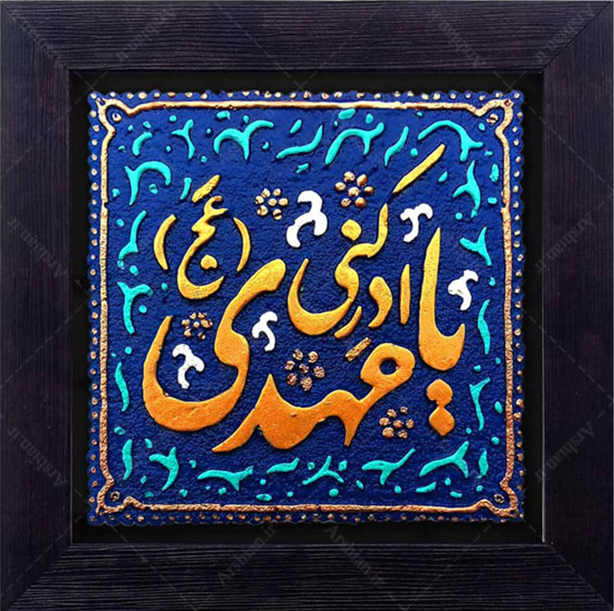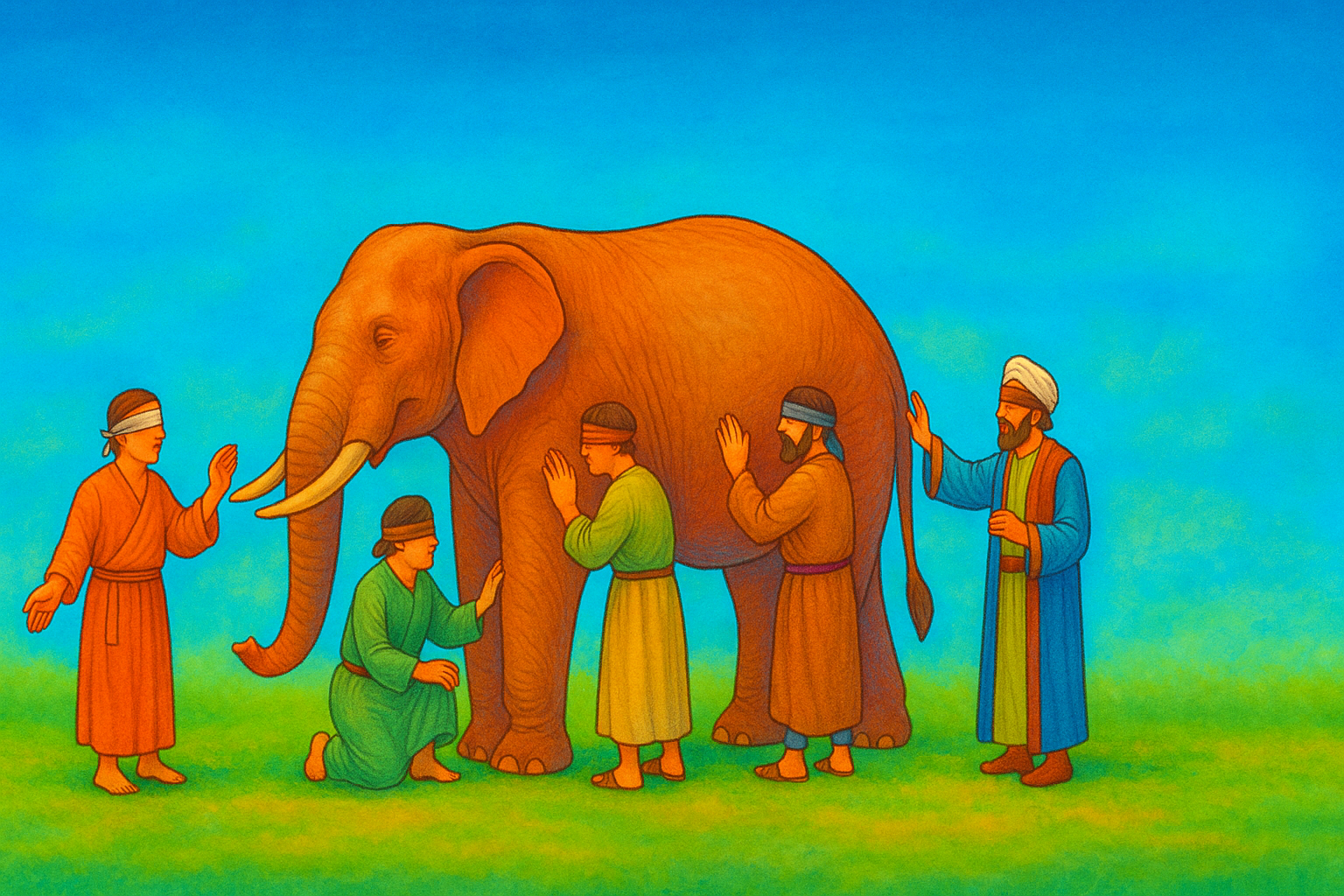Dr Dehghani
Honestly, I was very pleased that we were finally able to hold a scholarly session like this.
I translated Edmund Hayes’ book not simply to disseminate it, but to open the door for serious academic critique — especially from our own scholars.
From the very beginning, I was never content with publishing this translation in isolation. I insisted: this work must be accompanied by critical commentary. In one of our earliest meetings, I explicitly warned, “Please don’t let this book be released quietly and without critique. That would be a mistake.”
I knew that if this book circulated widely without a scholarly response, it would provoke strong reactions — and rightly so. That’s why we started preparing an internal reply. We even held a preliminary session with Dr. Aḥmadī and several other respected scholars, and a number of capable researchers joined the effort.
We deliberately postponed the publication of both the translation and the response. We didn’t want Hayes’ work to spread before we were ready to engage it properly. And even now, I repeat: Don’t release the book without the critique.
Translation alone is never enough. It must go hand in hand with critical academic engagement.
I had already translated Verena Klemm’s article about five or six years ago — before the English version was even available. I worked directly from the original German. But even then, I held the same conviction: a translation without critique is insufficient. That’s why I never published it on its own.
Regarding Hayes’ use of loaded phrases, I agree that in certain contexts, such language might be justified based on his interpretive framework. But in other instances, it crosses a line. For example, the phrase “Shiʿi oligarch elite” is heavily charged and carries political and ideological connotations that go far beyond neutral academic language.
As for Hayes’ use of sources like al-Tanbīh and al-Hidāyah al-Kubrā, I don’t object to their usage per se. He has the right to refer to them. My concern is that he does so without any caveats or critical notes — for instance, failing to mention that al-Tanbīh is incomplete or that the attribution of al-Hidāyah al-Kubrā to al-Khaṣībī is disputed. He then builds key arguments upon these sources without qualification, which weakens his case.
When it comes to his repeated use of terms like “maybe” or “perhaps”, I agree that such language can reflect scholarly caution. But my critique is twofold: first, he uses these speculative qualifiers far too frequently, and second, he often moves from speculation to asserting firm historical conclusions — which is methodologically unsound.
Finally, regarding his knowledge of Persian: yes, I must say there is a clear shortfall. He cites very few Persian sources. In fact, during an email exchange, a Persian-language work was mentioned to him, and he responded with surprise and appreciated it being brought to his attention. At his level of research, however, one would expect much more familiarity with the contemporary Persian scholarly landscape.
It’s worth noting that many contemporary western scholars of Shiʿism have narrowed their research to a particularly sensitive and foundational phase of Imamī history: the transitional period between the end of the Minor Occultation (Ghaybat al-Ṣughrā) and the beginning of the Major Occultation (Ghaybat al-Kubrā). This juncture is critical because it represents the structural shift from direct Imamic guidance to the authority of scholarly representation — a cornerstone of Twelver Shīʿī theology.
For example, Roy Vilozny — a student of Etan Kohlberg — has devoted his research to Aḥmad ibn Muḥammad ibn Khālid al-Barqī, recognizing the pivotal role he played in shaping the Shīʿī intellectual tradition during this era.
A few further observations can be made regarding internal inconsistencies and historical inaccuracies in Hayes’ thesis:
Hayes asserts that the institution of sifārah (deputyship) reached its peak during the tenure of the third deputy, al-Ḥusayn ibn Rūḥ, yet simultaneously claims that the institution collapsed almost immediately after his demise. This raises serious questions: How can an institution be at its most consolidated point and then collapse virtually instantaneously? This ambiguity undermines the coherence of the developmental narrative he attempts to construct.
Hayes also claims that the dissolution of the institution of sifārah was driven by a conscious decision among influential Shīʿī scholars. However, his theory appears to be Baghdad-centric — emphasizing the role of scholars in that region — while side-lining the far more influential scholarly tradition of Qom during that time. Many key figures and doctrinal developments during the early ghaybah period emerged from Qom, not Baghdad, and this geographic misalignment weakens the historical plausibility of his argument.
Hayes at times misreads core Shiʿi concepts due to limited engagement with Shiʿi jurisprudence and theology. For example, he appears unfamiliar with basic legal rulings, such as those on inheritance, which weakens parts of his analysis of post-ʿAskarī events. He misinterprets key theological terms like badāʾ and taqiyya.
He also makes major claims without citing proper evidence. Consider the following examples:
“There had long been a tension between the authority of the Imam and the independent scholarly authority of Shiʿi scholars.”[1]
“The preservation of Imamic rulings as hadith had the effect of narrowing the scope for the authority of living Imams, and established the scholars as touchstones for determining whether candidates for Imamate were fit for purpose…”[2]
“These reports do not dominate among our sources, perhaps because they were later effaced or minimized in order to support the narrative of the envoys.”[3]
What kind of reasoning is this?! These reports don’t exist or are very few? Why? Because maybe the deputies erased them?!
The dispute between Ja’far and the mother of Imam ‘Askari (a) is depicted as, “The sources emphasize the painful nature of this dispute, and the factions that arose as a result.”[4]
“The death of the final member of the old guard appears to have been a rupture almost as traumatic as the death of the eleventh Imam himself, to be eventually resolved by the rise of Abū Jaʿfar as envoy.”[5]
Hayes bases several of his critiques on assumptions that are not, in themselves, flawed.
For example, the statement that “There are three main versions of who performed the rituals over the eleventh Imam’s corpse” — what’s wrong with this, assuming it’s true? Is it objectionable to recite Salāt al-Mayyit several times by different people?
Or take the reference to the mother of Imam al-ʿAskarī (a) going to the Abbasid court over inheritance issues. But this is only natural. That wealth belonged to the institution of Imamate and had to be retrieved from Jaʿfar. Thus, the Imam’s mother had to go to the caliph to pursue that claim. What is wrong with that?
Or the mention of different names for the mother of Imam al-Mahdī — Hayes tries to present this as an indication that there was confusion about her identity. But everyone knows that at that time, it was entirely common for slave girls to have multiple names. That in itself is not an indication of confusion or fabrication.
Dr Tawūsī
I believe one of the strongest critiques that can be posed against Hayes’ work — and even against the broader academic lineage to which he belongs, such as Kohlberg — is the presence of internal contradictions within their arguments. For example, Kohlberg himself claims that the belief in a hidden Twelfth Imam, identified as the Mahdī, only crystalized between 290 and 310 AH. But in his own book on Sayyid Ibn Ṭāwūs, he notes that al-Saymūrī — who died in 280 AH — was able to identify the exact date of the Twelfth Imam’s birth through astrological means. That’s a clear contradiction. How could al-Saymūrī have identified the date of the Imam’s birth if the belief in his existence had not yet formed?
These kinds of inconsistencies must be highlighted. They significantly weaken the narrative being presented and offer strong grounds for internal critique.
As for the issue of translating without critique, ʿAṭāʾullāh Mohājirānī once famously said to the ḥawza: “It took you a hundred years to respond to Goldziher — at least give some response to Ahmad al-Katib. Don’t wait another hundred years.” And that really captures our dilemma. We collaborated with a friend on translating one of these works, but because the critique wasn’t yet complete, we refrained from publishing it — just like what you did.
I also want to build on what my friend Mr. Aḥmadī mentioned earlier: we really need to clarify certain foundational points before proceeding to more technical discussions. For instance — this term “crisis.” What crisis, exactly? Who was in crisis? If you look at the leaders and scholars of the Imamiyya — with the exception of a few deviants like Shalmaghānī — they were not confused or in error. Can you show me a single reputable figure from that era who outright rejected the Twelfth Imam or the doctrine of occultation?
Even the statement attributed to Abū Sahl al-Nawbakhtī — that the 12th Imam had died — has been soundly rejected by scholars. That poor man never said such a thing.
So at what level did this “crisis” really occur? I would argue it was mostly among the general population of the Shīʿa — they were confused, unsure, perhaps anxious. That’s why Shaykh al-Ṣadūq writes in the introduction to Kamāl al-Dīn that “the people of a certain village were in doubt, so I wrote this book to put their minds at ease.”
Let me add one final observation. Even the very reports cited by scholars like Hayes can, in fact, be turned around and used to support the opposing viewpoint. For instance, there is a Sunni report which states that al-Muktafī biʾllāh accused Ḥusayn ibn Rūḥ of embezzling the property of the Shīʿa — that his true motive was to consume their wealth under the guise of religious authority. Hayes and others use this as evidence of doubt or corruption within the deputyship institution.
But what does this report actually tell us?
It tells us that Ḥusayn ibn Rūḥ had widespread trust among the Shīʿa — that they were in fact sending him their money. There was evidently a well-established, recognized network of financial and religious authority. The Abbasid accusation, if anything, confirms the strength of his position and the Shīʿa community’s consensus on his legitimacy as the Imam’s agent. So rather than undermining the institution, this report — when read carefully — actually supports its historical reality and communal recognition.
Dr Kachaei
The Shīʿa experienced a crisis after the martyrdom of Imam Ḥasan al-ʿAskarī (ʿa) — even Ibn Bābawayh (al-Ṣadūq) acknowledges this. Some prominent scholars, like members of the Ibn Faḍḍāl family, joined the Fathīya. Deviations also emerged within the Bani Bastām family. So while it’s true that the laypeople were confused, we can’t deny that some respected figures also struggled. When individuals like Aḥmad ibn Isḥāq al-Ashʿarī and ʿAbd Allāh ibn Jaʿfar al-Ḥimyarī directly asked about the identity of the Imam, it clearly reflected uncertainty — if not a full-blown crisis, then at least lingering doubts.
And this doubt revolved around a specific question: Did Imam Ḥasan al-ʿAskarī (ʿa) leave behind a son or not? That question lies at the heart of the crisis. The doctrine of the Minor Occultation (al-Ghaybah al-Ṣughrā) arose precisely to address this uncertainty. And it was the Imam himself — through direct communication and agents — who managed the situation and re-established clarity and confidence within the community. Over time, a scholarly and popular consensus took shape. Even Sunni scholars like al-Ashʿarī record that the Shīʿa came to believe, with certainty, that the Imam is alive.
This is what Imamate means in practice: not just a theoretical doctrine, but a divinely appointed leadership that manages and resolves crises.
Now consider Abū Sahl al-Nawbakhtī — who died in 311 AH, nearly two decades before the beginning of the Major Occultation. Even he speaks of two occultations, the Minor and the Major. This concept was not invented later. Even al-Kulaynī — who also died before the Major Occultation — narrates reports in al-Kāfī that speak of two occultations.
So here is the question I pose to Edmund Hayes: How can you claim this was a later fabrication or conspiracy when these two scholars — who never even witnessed the Major Occultation — were already attesting to its structure? What “plot” were they a part of? What worldly benefit did they gain?
And let me end where Dr. Ṭāwūsī rightly concluded: We must begin with our own sources. Before relying on outsider narratives, read al-Kāfī, Kamāl al-Dīn, and al-Ghaybah by Shaykh al-Ṭūsī. These are our earliest and most reliable texts. My critique of Hayes is this: you say you used Shīʿī sources — but which ones? You didn’t seriously engage the foundational texts of this tradition. Review those first. Then let’s talk.
[1] Hayes, Agents of the Hidden Imam, p. 39
[2] Ibid, p. 40
[3] Ibid, p. 173
[4] Ibid, p. 61
[5] Ibid, p. 86




